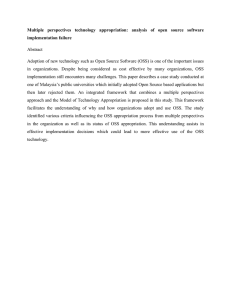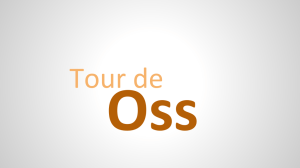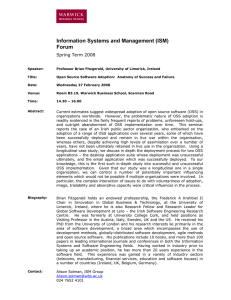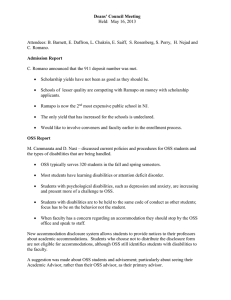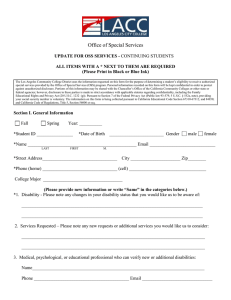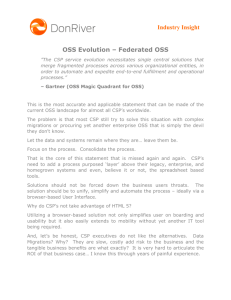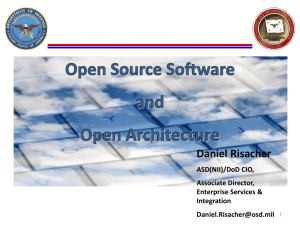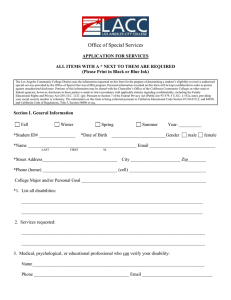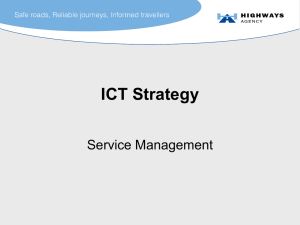OPEN SOURCE SOFTWARE
advertisement
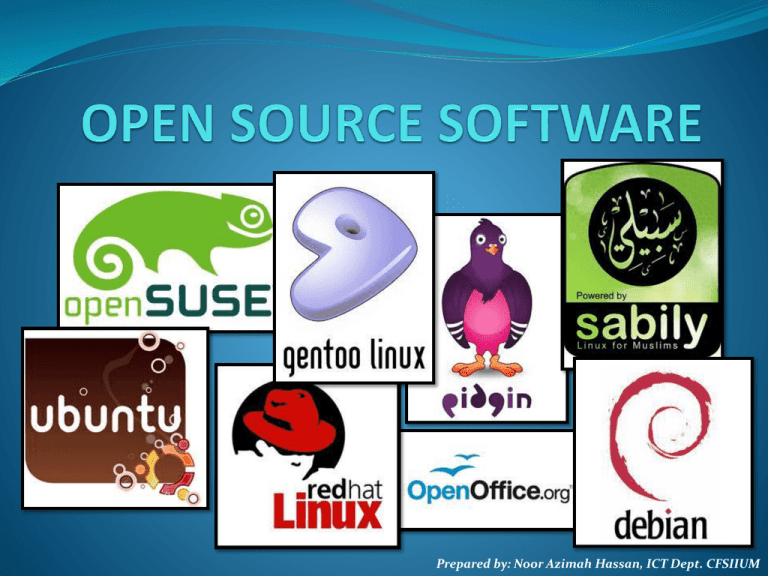
Prepared by: Noor Azimah Hassan, ICT Dept. CFSIIUM LEARNING OUTCOMES At the end of this session, you should be able to: 1. Define what is meant by the term “Open Source Software” (OSS) 2. Differentiate between OSS and Commercial Software 3. List the productivity software that is available from OSS domain 4. Describe the advantages and disadvantages of OSS 5. Name Operating Systems that are available in OSS domain 6. Describe the basic functionality of an Islamic-Based Open Source Operating System (Sabily) Why OSS? The main objective: to reduce the total cost of software ownership. Introduction Open source software generally allows anyone to make a new version of the software, port it to new operating systems and processor architectures, share it with others or market it. The aim of OSS is to let the product be more understandable, modifiable, duplicable, reliable or simply accessible, while it is still marketable. The free software movement was launched in 1983. In 1998, a group of individuals advocated that the term free software be replaced by Open Source Software (OSS) as an expression which is less ambiguous and more comfortable for the corporate world. Many people claim that the birth of internet, since 1969, started the open source movement. The Free Software Foundation (FSF) that started in 1985, intended the word free to emphasis on positive freedom to distribute rather than a negative freedom from cost. Definition Open Source defines a boundary on the usage, modification and redistribution of open source software. Software licenses grant rights to users which would otherwise be prohibited by copyright. These include rights on usage, modification and redistribution. It is often developed in a public, collaborative manner. Open source software is the most prominent example of open source development and often compared to user generated content. OSS vs. Commercial Software Productivity Software Advantages and Disadvantages OSS Operating System Islamic-based Open Source OS - Sabily Sabily is an OS that is customized specifically for Muslims. The Ubuntu OS is used as a groundwork for developing Sabily. Ubuntu is a GNU/Linux distribution whose goal is to provide an easy-to-use, up-to-date, stable and free system, also for companies. Sabily customizes Ubuntu by removing, modifying and adding software, and also customizes the graphic design to make a system adapted to Muslims. This is a community work done by voluntaries coming from all over the world (France, Tunisia, Egypt, Indonesia etc.). You can as well participate, as a developer, a graphic designer, a tester or if you just want to share your ideas. Sabily Features Sabily Features Sabily Features Main Features of Sabily The main software: Zekr and Mus-haf Othman (Quran study tools), Minbar and Firefoxpraytimes(prayer times applications), Monajat (application that popups prayers every predetermined time), Hijra (islamic calendar) WebStrict (parental control tool). Arabic language Customized graphic design Main Features of Sabily Other software: OpenOffice (word processor, spreasheet, presentation) Firefox (web browser) Pidgin (instant messaging) F-spot (photos management) Gimp (image manipulation program) and other multimedia software (video/audio)
